
Collection Profile: African Stools Collection
- Post Date: 5/26/2022
- Author: Bethany Johnson, former registration student assistant
- Reading Time: 5 minute read
When the pandemic struck in 2020, institutions such as museums that are dependent on visitors were forced to get creative with their place in society moving forward. Prior to the pandemic, I worked as a registration assistant, physically handling, measuring, labeling, and conducting research on artifacts. But when the museum closed due to the pandemic, we had to find ways to do our jobs remotely. This took me on a months-long research journey on a collection of stools from all over Africa. Among these are stools from the Mangbetu people, Asante, Tsonga, Senufo, Kamba, Dogon and more. It was a long assignment, but it proved to be fulfilling, as my specialty is African art history.
Stools are used in most cultures; we all need to sit. What makes African stools so special is that many of them carry a purpose beyond their function. Most of the stools in Spurlock’s collection were made in the late 19th or early 20th centuries. These stools are often quite intricate, but the tools used to make them are usually simple—axes, adzes, knives, and chisels. All of the stools in the collection are made of wood, but the specific type of wood used differs depending on community and artist, and could be chosen for such attributes as durability or ease of carving. African stools are commonly backless, armless, and low to the ground. They may be commissioned from an artisan or created by their owners. In my research I found two types of stools that stood out to me and that exemplify the diverse uses and meanings of African stools.
Asante (or Akan) Stools
-
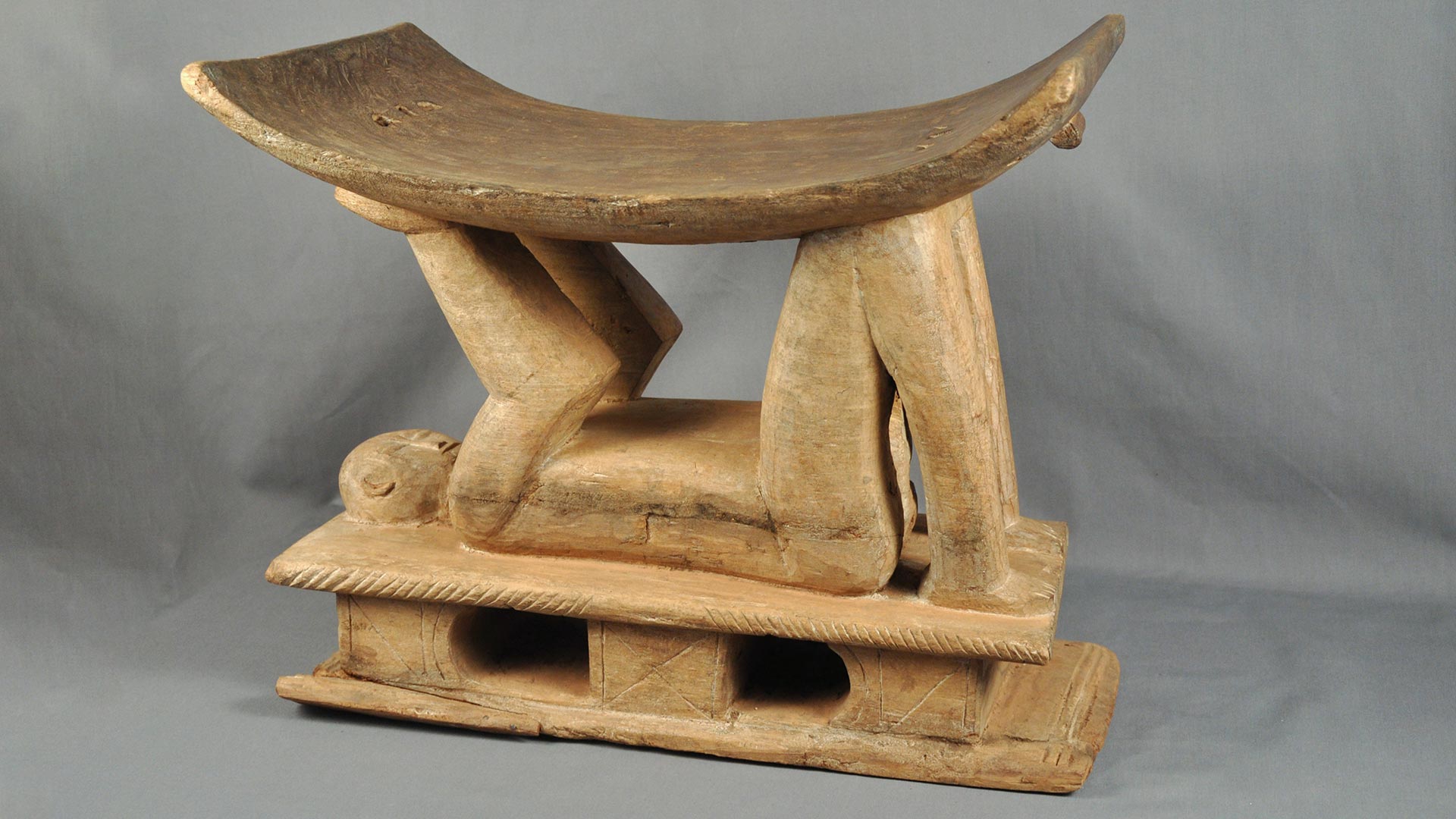 Stool 2012.03.2607
Stool 2012.03.2607
The Asante stools, also referred to as Akan stools, were my favorites of those I came across in my research. For the Asante people of Ghana these stools are much more than chairs, and they have been used for centuries in Asante culture. Their origin goes back to the unification ceremony of the Asante state, around the year 1680. During this ceremony, the priest Okomfo Anokye summoned a Golden Stool from the sky. This stool settled on the lap of Osei Tutu, making him the first king of the Asante people. This also explains the importance of these stools in Asante visual and political culture.
Today, these rectangular stools have various functions. They can be found in every Ghanaian household and are used as an everyday household item, in rites of passage, as a sacred object containing one’s spiritual essence, in ancestor veneration, and as a political symbol. They can also take many different forms (e.g.. 2012.03.2674, 2012.03.2676, 2012.03.2607), with geometric shapes, animals, and humans embedded into the design—all while maintaining an essential rectangular shape. The Asante stool is one of the most iconic stools in all of Africa.
-
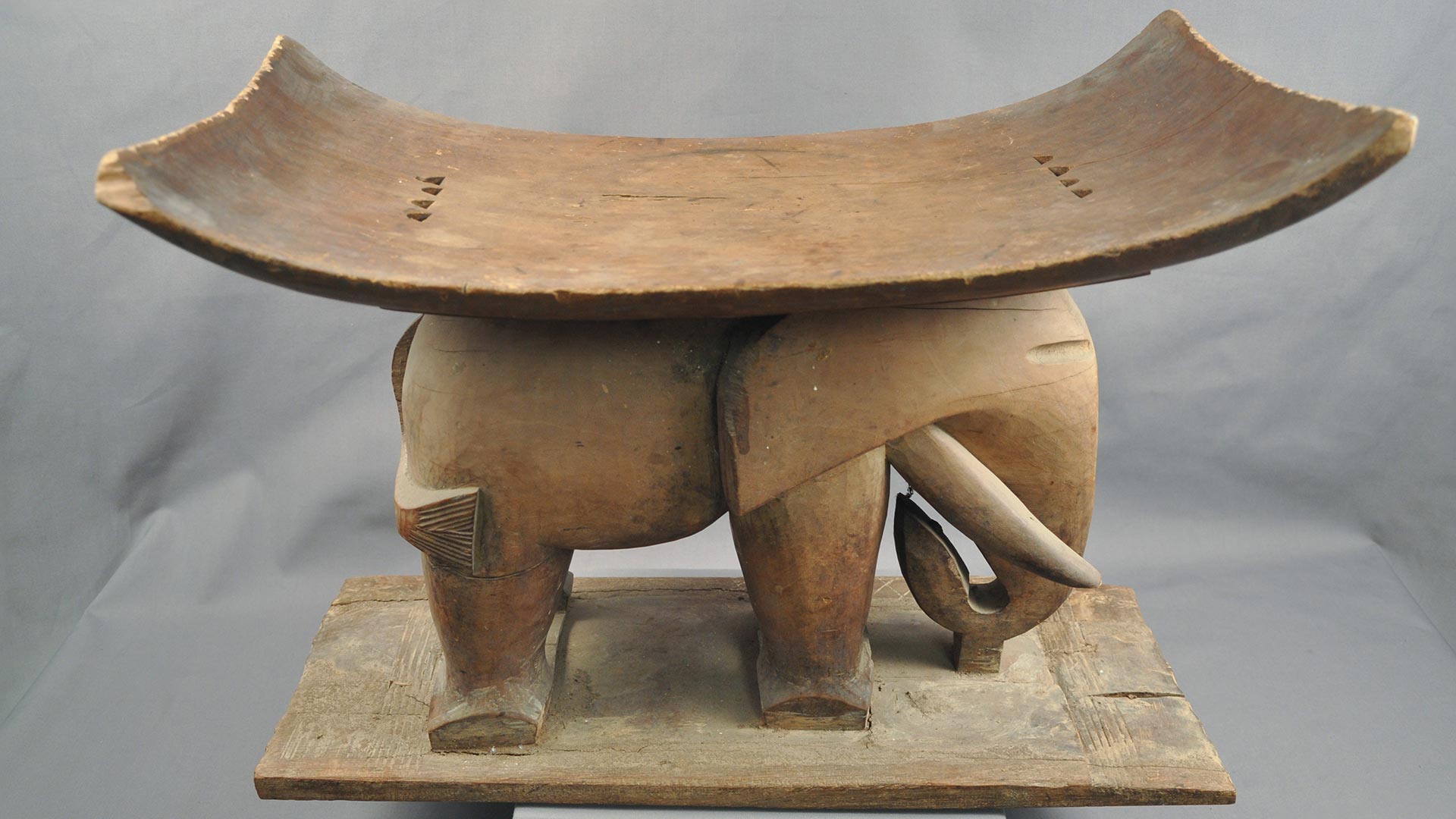 Elephant Stool 2012.03.2676
Elephant Stool 2012.03.2676 -
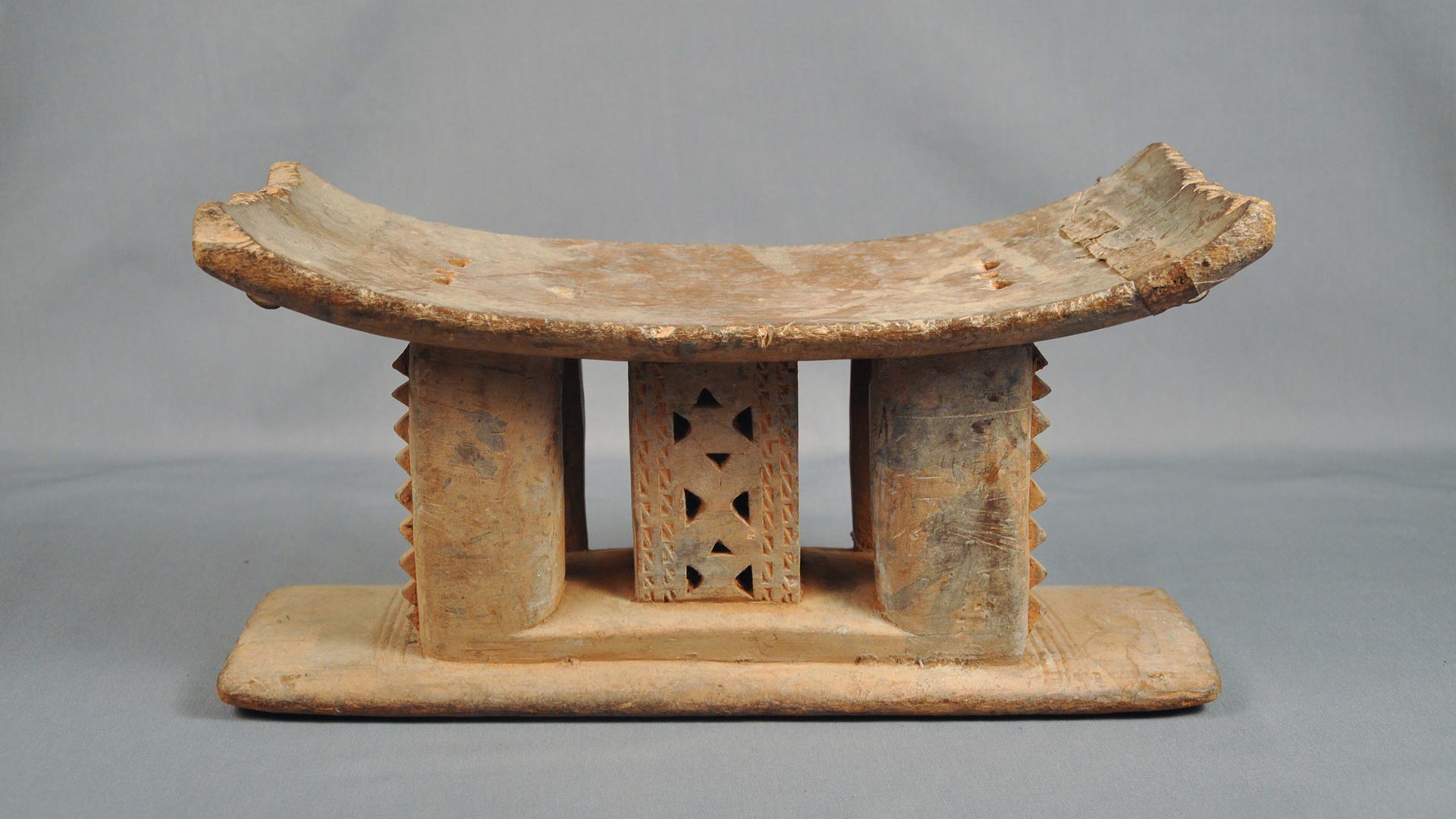 Stool 2012.03.2674
Stool 2012.03.2674
Senufo Stools
-
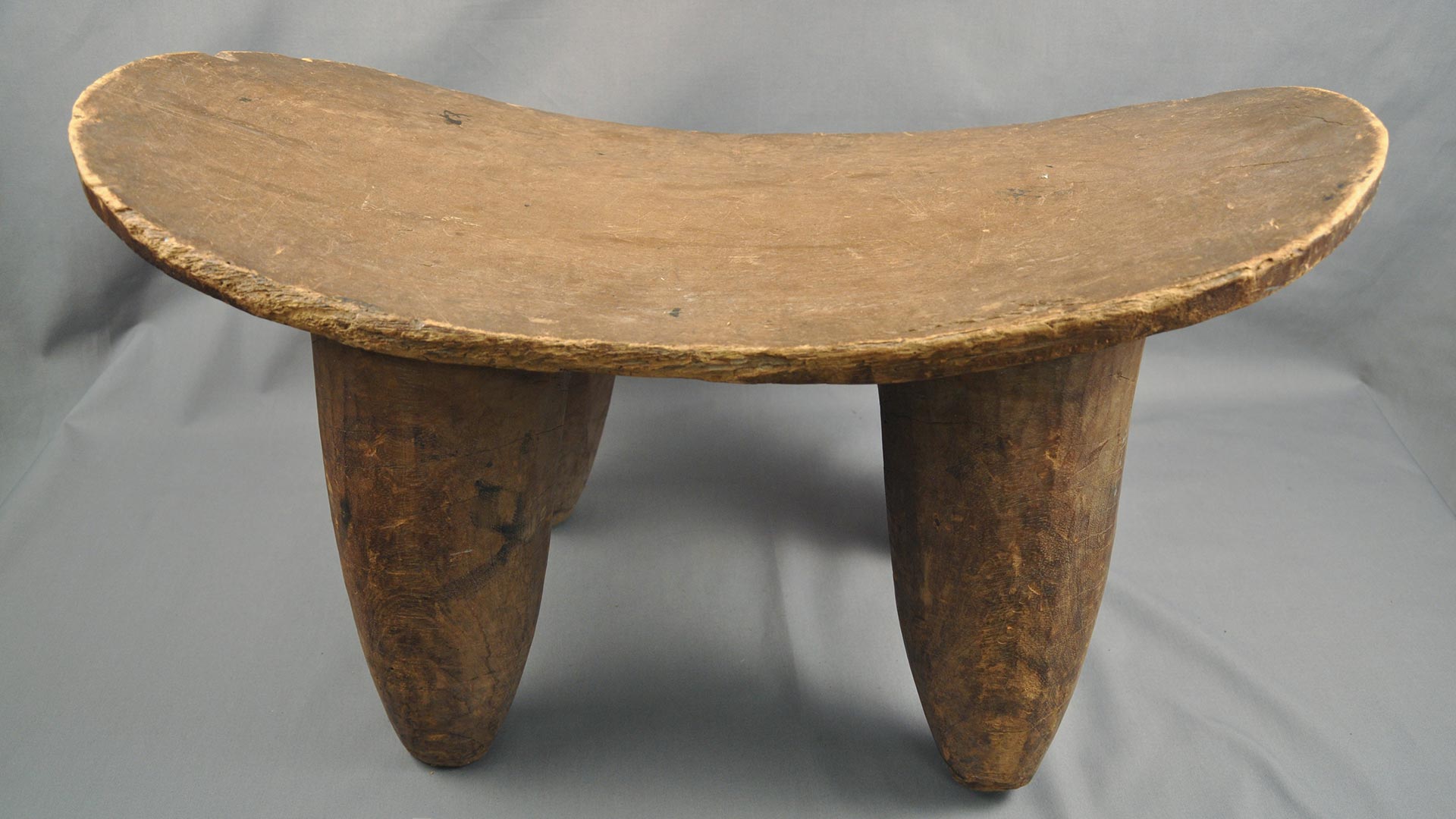 Stool 2012.03.2658
Stool 2012.03.2658
Another group of stools created for utilitarian purposes are those created by the Senufo of Cote d’Ivoire. These stools are low-lying, made from a single block of wood, and easily portable. One quality about Senufo stools, along with many other African stools, is the gendered aspect of their design. This is a different concept than we have in the West. A father may have a reclining chair in front of the television, but one would not be able to look at the chair and know that its owner and primary user is male.
Stools like the ones in our collection are typically used in rural Senufo communities by women during washday. Their low height allows women to sit in shallow waters and wash clothes in the river. Men have their own type of seat, similar to those used by women, except they have a backrest. This allows the man to recline while being seated, which suggests that these stools were not made for work, but instead for relaxation. The wear on the Senufo stools in our collection (e.g. 2012.03.2658, 2012.03.2679, 1998.10.0002) suggests they were purely utilitarian.
-
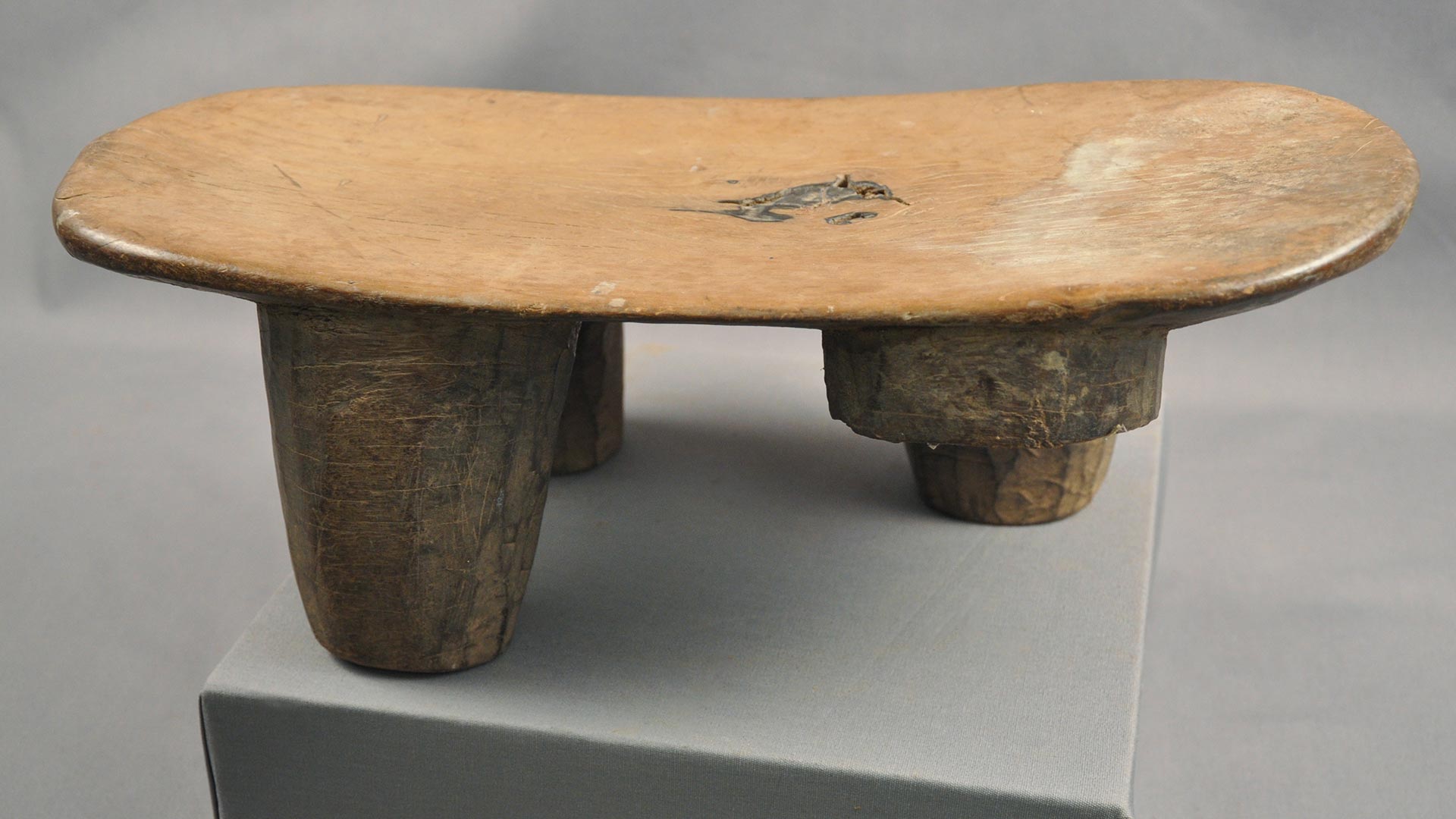 Washing Stool 2012.03.2679
Washing Stool 2012.03.2679
Summary
The examples I have given show the religious, social, and cultural power African stools can have, as well as the everyday uses for which they are made. There are still many more stools in our collection, and I suggest investigating them in person or online–it might make you think twice about the roles the chairs in your home may hold.
-
- Share:
- Subscribe to Newletter
- Giving